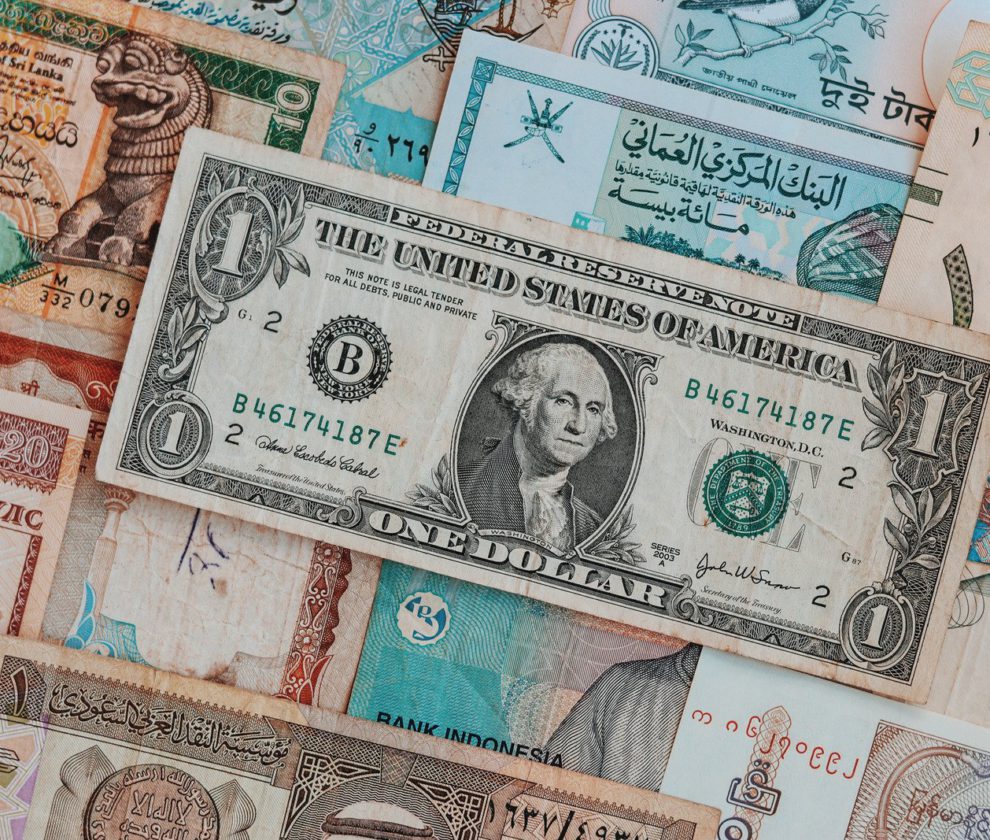What is Bitcoin Cash?
Bitcoin cash is a cryptocurrency created in August 2017, from a fork of Bitcoin. Bitcoin Cash increased the size of blocks, allowing more transactions to be processed and improving scalability.
The cryptocurrency underwent another fork in November 2018 and split into Bitcoin Cash ABC and Bitcoin Cash SV (Satoshi Vision). Bitcoin Cash is referred to as Bitcoin Cash because it uses the original Bitcoin Cash client.
Understanding Bitcoin Cash
The difference between Bitcoin and Bitcoin Cash is philosophical.
As proposed by Bitcoin inventor Satoshi Nakamoto, Bitcoin was meant to be a peer-to-peer cryptocurrency that was used for daily transactions. Over the years, as it gained mainstream traction and its price surged, Bitcoin became an investment vehicle instead of a currency. Its blockchain witnessed scalability issues because it could not handle the increased number of transactions. The confirmation time and fees for a transaction on bitcoin’s blockchain surged. This was mainly due to the 1MB block size limitation for bitcoin. Transactions queued up, waiting for confirmation because blocks could not handle the increase in size for transactions.
Bitcoin Cash proposes to remedy the situation by increasing the size of blocks to between 8 MB and 32 MB, thereby enabling the processing of more transactions per block. The average number of transactions per block on Bitcoin at the time Bitcoin Cash was proposed was between 1,000 and 1,500. The number of transactions on Bitcoin Cash’s blockchain during a stress test in Sep. 2018 surged to 25,000 per block.
Major proponents of Bitcoin Cash, such as Roger Ver, often invoke Nakamoto’s original vision of a payment service as a reason to increase the block size. According to them, the change in bitcoin’s block size will enable bitcoin’s use as a medium for daily transactions and help it compete with multinational credit card processing organizations, such as Visa, which charge high fees to process transactions across borders.
Bitcoin Cash also differs from bitcoin in another respect as it does not incorporate Segregated Witness (SegWit), another solution proposed to accommodate more transactions per block. SegWit retains only information or the metadata relating to a transaction in a block. Typically, all details pertaining to a transaction are stored in a block.
Ideological and block size differences apart, there are several similarities between Bitcoin and Bitcoin Cash. Both use the Proof of Work (PoW) consensus mechanism to mine new coins. They also share the services of Bitmain, the world’s biggest cryptocurrency miner. The supply of Bitcoin Cash is capped at 21 million, the same figure as Bitcoin. Bitcoin Cash also started off using the same mining difficulty algorithm – known technically as Emergency Difficulty Adjustment (EDA) – which adjusts difficulty every 2016 blocks or roughly every two weeks. Miners took advantage of this similarity by alternating their mining activity between Bitcoin and Bitcoin Cash. While it was profitable for miners, the practice was detrimental to the increasing supply of Bitcoin Cash in the markets. Hence, Bitcoin Cash has revised its EDA algorithm to make it easier for miners to generate the cryptocurrency.
History of Bitcoin Cash
In 2010, the average size of a block on Bitcoin’s blockchain was less than 100 KB and the average fee for a transaction amounted to just a couple of cents. This made its blockchain vulnerable to attacks, consisting entirely of cheap transactions, that could potentially cripple its system. To prevent such a situation, the size of a block on bitcoin’s blockchain was limited to 1 MB. Each block is generated every 10 minutes, allowing for space and time between successive transactions. The limitation on size and time required to generate a block added another layer of security on bitcoin’s blockchain.
But those safeguards proved to be a hindrance when bitcoin gained mainstream traction on the back of greater awareness of its potential and enhancements to its platform. The average size of a block had increased to 600K by Jan. 2015. The number of transactions using Bitcoin surged, causing a buildup of unconfirmed transactions. The average time to confirm a transaction also moved upwards. Correspondingly, the fee for transaction confirmation also increased, weakening the argument for bitcoin as a competitor to expensive credit card processing systems. (Fees for transactions on bitcoin’s blockchain are specified by users. Miners typically push transactions with higher fees to the front of the queue in order to maximize profits.)
Two solutions were proposed by developers to solve the problem: increase the average block size or exclude certain parts of a transaction to fit more data into the blockchain. The Bitcoin Core team, which is responsible for developing and maintaining the algorithm that powers bitcoin, blocked the proposal to increase block size. Meanwhile, a new coin with flexible block size was created. But the new coin, which was called Bitcoin Unlimited, was hacked and struggled to gain traction, leading to doubts about its viability as a currency for daily transactions.
The first proposal also drew sharp and diverse reactions from the bitcoin community. Mining behemoth Bitmain was hesitant to support Segwit implementation in blocks because it would affect sales for its AsicBoost miner. The machine contained a patented mining technology that offered a “shortcut” for miners to generate hashes for crypto mining using less energy. However, Segwit makes it more expensive to mine Bitcoin using the machine because it makes transaction reordering difficult.
Amidst a war of words and staking out of positions by miners and other stakeholders within the cryptocurrency community, Bitcoin Cash was launched in August 2017. Each Bitcoin holder received an equivalent amount of Bitcoin Cash, thereby multiplying the number of coins in existence. Bitcoin Cash debuted on cryptocurrency exchanges at an impressive price of $900. Major cryptocurrency exchanges, such as Coinbase and itBit, boycotted Bitcoin Cash and did not list it on their exchanges.
But it received vital support from Bitmain, the world’s biggest cryptocurrency mining platform. This ensured a supply of coins for trading at cryptocurrency exchanges when Bitcoin Cash was launched. At the height of cryptocurrency mania, Bitcoin Cash’s price skyrocketed to $4,091 in December 2017.
Paradoxically enough, Bitcoin Cash itself underwent a fork slightly more than a year later due to the same reason it split from Bitcoin. In Nov. 2018, Bitcoin Cash split into Bitcoin Cash ABC and Bitcoin Cash SV (Satoshi Vision). This time around, the disagreement was due to proposed protocol updates that incorporated the use of smart contracts onto bitcoin’s blockchain and increased the average block size.
Bitcoin Cash ABC uses the original Bitcoin Cash client but has incorporated several changes to its blockchain, such as Canonical Transaction Ordering Route (CTOR) – which rearranges transactions in a block to a specific order.
Bitcoin Cash SV is led by Craig Wright, who claims to be the original Nakamoto. He rejected the use of smart contracts on a platform that was meant for payment transactions. The drama prior to the latest hard fork was similar to the one before forking Bitcoin Cash from Bitcoin in 2017. But the end has been a happy one as more funds have flowed into the cryptocurrency ecosystem due to the forking and the number of coins available to investors has multiplied. Since launching, both cryptocurrencies have garnered respectable valuations at crypto exchanges.
Concerns About Bitcoin Cash
Bitcoin Cash promised several improvements over its predecessor. But it has yet to deliver on those promises.
The most important one is regarding block size. The average size of blocks mined on Bitcoin Cash’s blockchain is much smaller than those on Bitcoin’s blockchain. The smaller block size means that its main thesis of enabling more transactions through larger blocks is yet to be tested technically. Transaction fees for bitcoin have also dropped significantly, making it a viable competitor to bitcoin cash for daily use.
Other cryptocurrencies aspiring to similar ambitions of becoming a medium for daily transactions have added another wrinkle to Bitcoin Cash’s original ambitions. They have staked out projects and partnerships with organizations and governments, at home and abroad. For example, Litecoin announced partnerships with event organizers and professional associations, and others, such as Dash, claim to have already gained traction in troubled economies like Venezuela, although such claims are disputed.
While its split from Bitcoin was fairly high-profile, Bitcoin Cash is mostly unknown outside the crypto community and is yet to make major announcements about adoption. Based on transaction levels on blockchain, Bitcoin still has a sizeable lead over its competition.
The second fork on Bitcoin Cash’s blockchain also highlights problems with managing its developer pool. That a sizeable section of the pool thought that Bitcoin cash was diluting its original vision is troubling because it opens the door to further splits in the future. Smart contracts are an essential feature of all cryptocurrencies. However, it remains to be seen whether Bitcoin Cash pivots to become a platform for incorporating smart contracts for transactions or simply for payment systems.
Bitcoin Cash also does not have a clearly-defined governance protocol. While other cryptocurrencies, such as Dash and VeChain, have innovated and outlined detailed governance protocols that assign voting rights, the development, and design of Bitcoin Cash seem to be centralized with its development teams. As such, it is unclear with investors without substantial holdings of the cryptocurrency have voting rights or a say in the cryptocurrency’s future direction.
KEY TAKEAWAYS
- Bitcoin Cash is the result of a Bitcoin hard fork occurring in August 2017.
- Bitcoin Cash was created to accommodate a larger block size compared to Bitcoin, allowing more transactions into a single block.
- Despite their philosophical differences, Bitcoin Cash and Bitcoin share several technical similarities. They use the same consensus mechanism and have capped their supply at 21 million.
- Bitcoin Cash itself underwent a fork in November 2018 and split into Bitcoin Cash ABC and Bitcoin Cash SV (Satoshi Vision). Bitcoin Cash ABC is referred to as Bitcoin Cash now.



